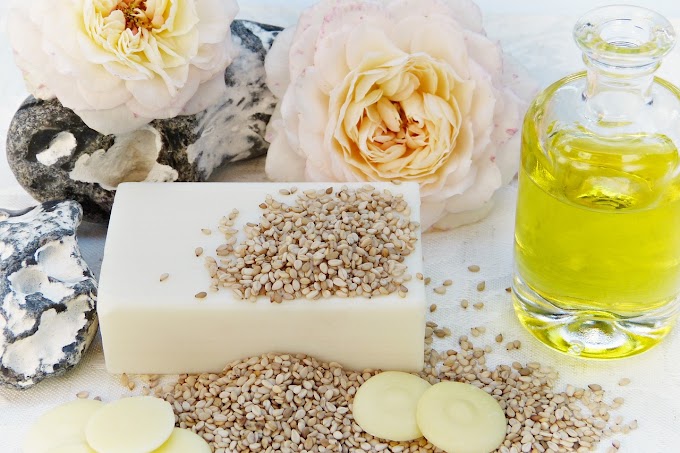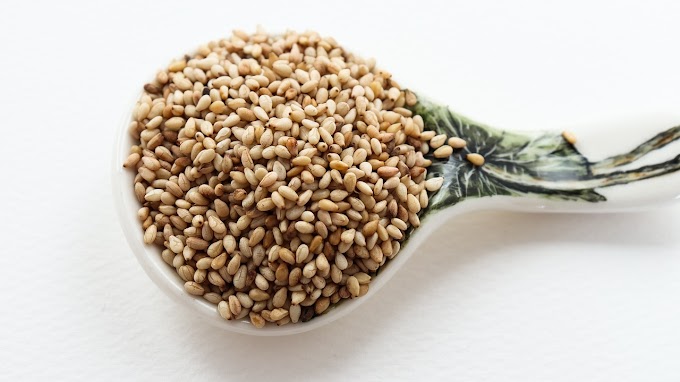Introduction
Navigating the realm of holistic wellness, Ayurveda emerges as an ancient medicinal framework that has guided individuals toward optimal health and balance for millennia. A fundamental aspect of Ayurveda is the dosha system, which categorizes individuals into three primary constitutional types: Vata, Pitta, and Kapha. This blog post delves into the intricacies of the Vata dosha, exploring its nature, characteristics, and methods for maintaining equilibrium to foster a harmonious life.
Vata Dosha: Cultivating Inner Harmony for Well-being
Vata DoshaVata dosha constitutes one of the three vital energies or life forces in Ayurveda, often referred to as the "wind" dosha due to its association with the elements of air and ether (space). Governing various bodily functions, including movement, communication, creativity, and flexibility, Vata, akin to the wind, can manifest in diverse ways within our bodies and minds.
Characteristics of Vata Dosha
To comprehend Vata dosha, it is crucial to identify its core characteristics:Cold and Dry: Inherently cold and dry, imbalanced Vata can result in issues such as dry skin, hair, and joints.
Light and Mobile: Light and mobile, Vata oversees all internal movements, from blood circulation to the blinking of eyes.
Creative and Energetic: When in balance, individuals dominated by Vata dosha tend to be creative, adaptable, and energetic, with a propensity for quick learning and a penchant for creative pursuits.
Prone to Anxiety: Imbalance in Vata can lead to uneasiness, anxiety, and a scattered mind, often accompanied by racing thoughts.
Irregular Digestion: Vata governs the colon, contributing to irregular digestion, leading to issues like gas, bloating, and constipation when out of balance.
Variable Appetite: Individuals with Vata dosha may experience variable appetite and digestion, swinging between intense hunger and minimal interest in food.
Balancing Vata Dosha
Maintaining overall well-being in Ayurveda revolves around balancing your doshas. For Vata types, here are essential tips for harmonizing Vata dosha:Warmth: Counteract Vata's inherent coldness by staying warm. Dress in layers, maintain a cozy living space and consume warm, nourishing foods and drinks.
Routine: Establishing a daily routine helps mitigate Vata's erratic nature. Maintain consistent sleep and wake times, and adhere to regular meal schedules.
Nourishing Diet: Opt for warm, grounding foods like soups, stews, cooked grains, and root vegetables. Minimize intake of cold and raw foods.
Oil Massage: Regular self-massage with warm oil (abhyanga) alleviates Vata's dryness and promotes relaxation.
Yoga and Meditation: Gentle yoga and meditation practices aid in calming the restless mind and keeping Vata in check.
Adequate Rest: Ensure sufficient sleep, as Vata types are prone to insomnia. Develop a calming bedtime routine to facilitate winding down.
Herbal Support: Consult with an Ayurvedic practitioner for personalized herbal remedies that aid in balancing Vata dosha.
Breathing Exercises (Pranayama): Vata dosha's association with air makes pranayama exercises effective. Practice deep, mindful breathing techniques to calm the mind and alleviate anxiety.
Meditation and Mindfulness: Regular meditation and mindfulness practices help ground Vata individuals, enhancing concentration and fostering inner peace.
Warm, Aromatherapeutic Baths: A soothing bath with warm water relaxes the body and mind. Enhance the experience with a few drops of calming essential oils like lavender, chamomile, or sandalwood.
Sound Therapy: Vata types benefit from sound therapy, such as listening to calming music or engaging in sound healing techniques like chanting or playing a musical instrument.
Ayurvedic Herbs for Vata
Ayurveda provides a rich tradition of herbal remedies to support Vata dosha balance. Some herbs and spices known for their Vata-pacifying qualities include:Ashwagandha: An adaptogenic herb renowned for reducing stress, enhancing energy, and promoting mental clarity.
Shatavari: Known as the "queen of herbs," Shatavari nourishes and moisturizes Vata, particularly beneficial for addressing dryness and reproductive health.
Triphala: A classic Ayurvedic formula composed of three fruits (Amalaki, bibhitaki, and haritaki), supporting healthy digestion, regular elimination, and overall detoxification.
Ginger: Warming and digestive, ginger aids in alleviating digestive discomfort associated with imbalanced Vata.
Vata dosha, as the "wind" dosha, encapsulates the dynamic and ever-changing aspects of our being. Comparable to the wind's gentle breezes or turbulent gusts, Vata manifests differently in individuals, influencing both physical and mental realms. Understanding these subtleties is crucial for personalized well-being.
Creative Potential: In its balanced state, Vata individuals are not just adaptable and energetic; they often possess a heightened creative potential. Embracing this creativity can become a powerful tool for self-expression and problem-solving.
Mind-Body Connection: Vata's influence extends beyond the physical body to the mind. Imbalances may manifest as racing thoughts, scattered attention, or heightened anxiety. Cultivating mindfulness practices becomes not just a suggestion but a necessity for those with predominant Vata dosha.
Seasonal Impact: Ayurveda recognizes the influence of seasons on dosha balance. Vata tends to increase during the fall and early winter. Acknowledging and adjusting lifestyle and dietary practices accordingly during these seasons can contribute significantly to maintaining balance.
Lifestyle Adjustments for Vata Harmony
Holistic Approaches to Balance:Beyond the outlined practices, incorporating holistic lifestyle adjustments enhances the effectiveness of Vata balancing:
Nature Connection: Spending time in nature, whether through walks in the park, hikes, or simply grounding oneself on natural surfaces, aligns with Vata's affinity for the elemental forces. Nature serves as a calming influence.
Creative Outlets: Engaging in regular creative pursuits, be it art, writing, or any form of self-expression, provides a constructive channel for the abundant energy of Vata. This not only fosters balance but also serves as a source of joy and fulfillment.
Social Harmony: Vata types often thrive in supportive and harmonious social environments. Cultivating positive relationships and minimizing exposure to stressful situations contribute significantly to overall well-being.
Ayurveda's Wholistic Vision
Integrating Mind, Body, and Spirit:Ayurveda's strength lies in its holistic approach, addressing not just the physical symptoms but the overall well-being of an individual. Beyond the tangible practices, incorporating spiritual practices, such as mindfulness, gratitude, and self-reflection, adds depth to the Ayurvedic journey.
Mindful Eating: Ayurveda places immense importance on mindful eating. Taking the time to savor and appreciate each bite allows the body to better assimilate nutrients and aids in digestion—particularly important for Vata individuals with irregular digestion.
Ayurvedic Cleansing (Panchakarma): Periodic detoxification through Ayurvedic cleansing practices helps reset the doshas. Vata types can benefit from treatments that focus on nourishment and replenishment to counterbalance their inherent dryness.
Embracing the Continuum of Balance
A Journey, Not a Destination:
Ayurveda views health as a dynamic equilibrium rather than a fixed state. The journey to balance involves continuous self-awareness and adjustments. Embracing this mindset allows individuals to navigate life's fluctuations with resilience and grace.Regular Self-Assessment: Periodically reassessing one's constitution and adjusting practices accordingly ensures that the recommendations remain aligned with the evolving needs of the individual.
Community Support: Joining Ayurvedic communities or wellness groups provides a platform for shared experiences and learning. This sense of community support enhances the individual's commitment to Ayurvedic principles.
Consult an Ayurvedic Professional
While these tips serve as a valuable starting point, it's crucial to remember that Ayurveda is a personalized system of medicine. Your unique constitution and imbalances require a tailored approach. Consulting with an experienced Ayurvedic professional provides a comprehensive assessment of your dosha, guiding you toward personalized recommendations for diet, lifestyle, and herbal supplements.Conclusion
Vata dosha constitutes a fascinating aspect of Ayurveda, influencing physical, mental, and emotional well-being. By embracing Ayurvedic principles and incorporating these tips into your lifestyle, you can maintain balance in Vata dosha, reaping the numerous benefits of a harmonious and vibrant existence. Remember, the journey to balance is continuous, and by nurturing your Vata dosha, you take a significant step toward a healthier, more balanced life.
FAQ's
1. What is Vata Dosha in Ayurveda?Vata dosha is one of the three fundamental energies or life forces in Ayurveda, often referred to as the "wind" dosha due to its association with the elements of air and ether (space). It governs various bodily functions, including movement, communication, creativity, and flexibility.
2. How can I identify if I have a dominant Vata Dosha?
2. How can I identify if I have a dominant Vata Dosha?
Individuals with dominant Vata dosha often exhibit characteristics such as creativity, adaptability, and a tendency towards anxiety or scattered thoughts. Physical traits may include dry skin, light body frame, and variable appetite.
3. What are the key characteristics of imbalanced Vata Dosha?
3. What are the key characteristics of imbalanced Vata Dosha?
Imbalanced Vata can manifest as dry skin, hair, and joints, irregular digestion, anxiety, scattered thoughts, and insomnia. Recognizing these signs helps in tailoring a balanced approach to wellness.
4. How can I balance Vata Dosha in my daily life?
4. How can I balance Vata Dosha in my daily life?
Balancing Vata involves practices such as staying warm, establishing a routine, consuming nourishing, warm foods, engaging in gentle yoga and meditation, ensuring adequate rest, and incorporating Ayurvedic herbs like Ashwagandha and Shatavari.
5. Are there specific lifestyle adjustments for Vata harmony?
5. Are there specific lifestyle adjustments for Vata harmony?
Yes, lifestyle adjustments include connecting with nature, engaging in creative outlets, fostering positive social environments, and incorporating mindful practices in daily life.
6. Can seasonal changes impact Vata Dosha?
6. Can seasonal changes impact Vata Dosha?
Yes, Ayurveda acknowledges that Vata tends to increase during the fall and early winter. Adapting lifestyle and dietary practices during these seasons can contribute to maintaining Vata balance.
7. How does Ayurveda view overall well-being beyond physical practices?
7. How does Ayurveda view overall well-being beyond physical practices?
Ayurveda emphasizes a holistic approach, integrating mind, body, and spirit. Practices like mindful eating, Ayurvedic cleansing (Panchakarma), and spiritual engagement contribute to a comprehensive vision of well-being.
8. Is Ayurveda a one-size-fits-all approach?
8. Is Ayurveda a one-size-fits-all approach?
No, Ayurveda is a personalized system of medicine. Each individual has a unique constitution, and recommendations are tailored based on one's specific needs and imbalances. Consulting with an Ayurvedic professional provides personalized guidance.
9. Is the journey to balance a continuous process?
9. Is the journey to balance a continuous process?
Yes, Ayurveda views health as a dynamic equilibrium. Regular self-assessment, community support, and embracing the idea of a continuous journey allow individuals to navigate life's fluctuations with resilience and grace.
10. How can I join Ayurvedic communities or wellness groups for support?
10. How can I join Ayurvedic communities or wellness groups for support?
Many online platforms and local communities focus on Ayurvedic principles and holistic well-being. Joining these groups provides a supportive environment for shared experiences and learning, enhancing your commitment to Ayurvedic practices.







